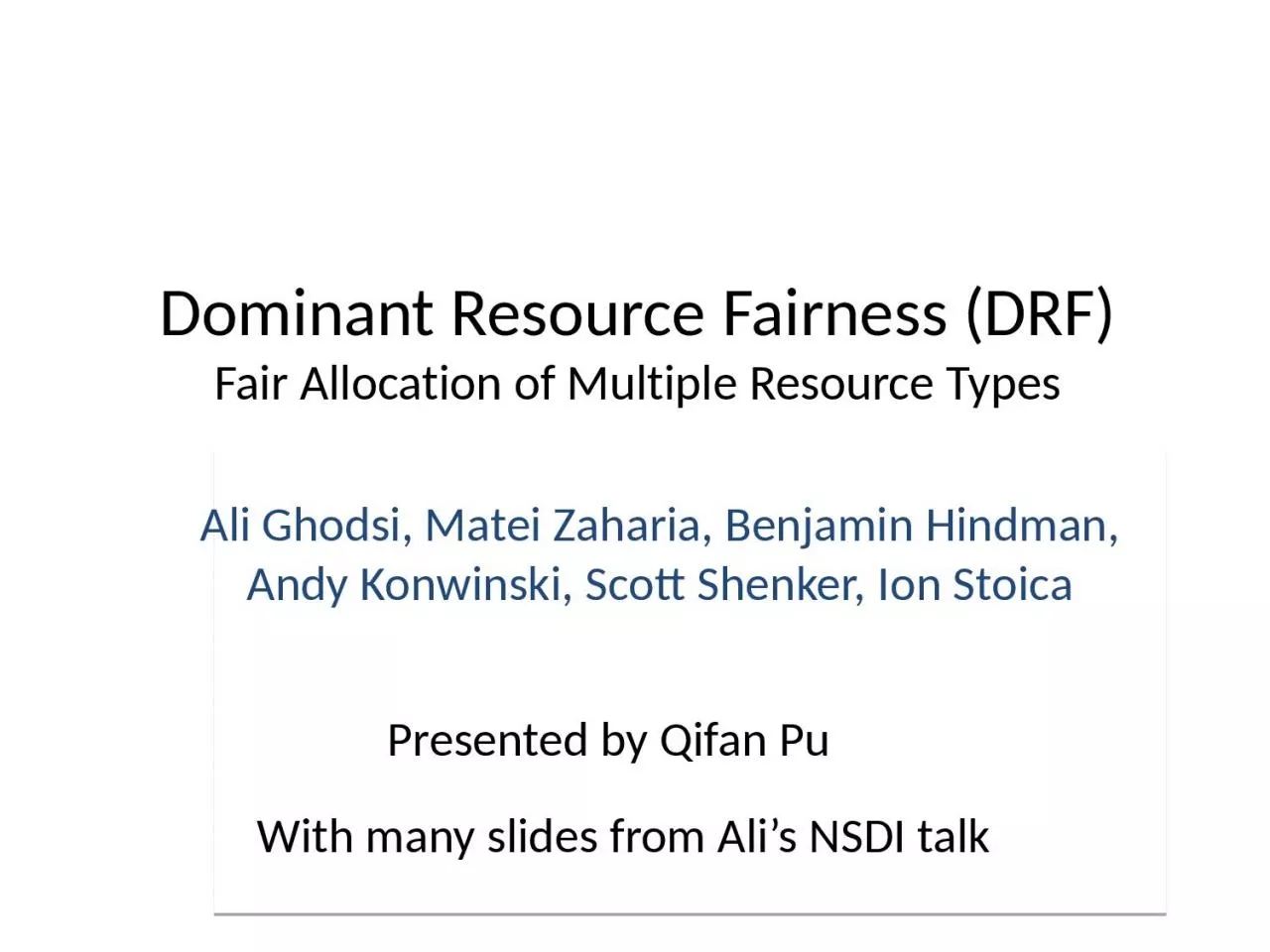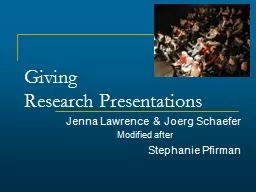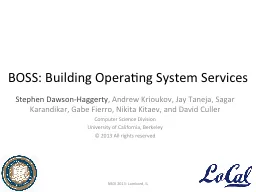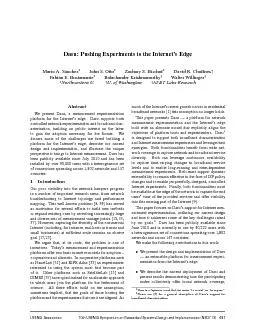PPT-Presented by Qifan Pu With many slides from Ali’s NSDI talk
Author : SnuggleBug | Published Date : 2022-08-01
Ali Ghodsi Matei Zaharia Benjamin Hindman Andy Konwinski Scott Shenker Ion Stoica What is Fair Sharing n users want to share a resource eg CPU Solution
Presentation Embed Code
Download Presentation
Download Presentation The PPT/PDF document "Presented by Qifan Pu With many slides f..." is the property of its rightful owner. Permission is granted to download and print the materials on this website for personal, non-commercial use only, and to display it on your personal computer provided you do not modify the materials and that you retain all copyright notices contained in the materials. By downloading content from our website, you accept the terms of this agreement.
Presented by Qifan Pu With many slides from Ali’s NSDI talk: Transcript
Download Rules Of Document
"Presented by Qifan Pu With many slides from Ali’s NSDI talk"The content belongs to its owner. You may download and print it for personal use, without modification, and keep all copyright notices. By downloading, you agree to these terms.
Related Documents














